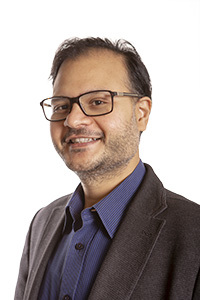SCArCITY
Start date: 2022-09-01
End date: 2026-08-31
Purpose and goal
Textile and clothing industry has gained attention for establishing circular business models recently. While the clothing sector, including second-hand, involves recycling and resale of clothes, the recent COVID-19 has in addition emphasized circularity in textile PPE sector. However, the current state of adoption is slow, and considerable sustainability impact can be achieved only by scaling-up these circular business models, which further demands more cascaded ways of operation. In addition, when operating different circular business models, e.g. recycling, resale, certain conflicts emerge in terms of goals, design and resource needs, and giving rise to several organizational paradoxes/tensions, which in turn hinder scaling. The purpose is to explore these strategic paradoxes in, and capabilities required for, integrating circular business models in cascaded textile and clothing systems, and propose relevant metrics to evaluate their performance.
Expected results and effects
The theoretical contribution of the project lie in deepening our understanding of circular business model scaling in cascaded textile systems, by going beyond descriptions of single circular business models and underlying resource flows, to explore, explain and solve the organizational tensions hindering cascaded systemic innovation. In doing so, the project theoretically advances research on circular business model scaling towards mid-range theory generation. Results from this project will also increase the understanding of how circular business models operating in cascaded textile systems can contribute to several Sustainable Development Goals, in particular 8, 9, 12 and 17 by impacting participating companies and ecosystems (scaling out), policy and laws (scaling up), and cultural values and roots (scaling deep).
The study is in line with FORMAS' priority areas. The goals are also linked to both, Europe’s newly adopted Circular Economy Action Plan for sustainable growth that prioritizes circular business models from a systemic perspective within textiles, and global priority to address plastic pandemic situation arising due to use of disposable COVID-essential PPE.
Planned approach and implementation
Theoretically, the project is based on a combination of paradox-, dynamic capabilities- and cascade chain- theories. While paradox theory contributes to the understanding of the strategic organizational tensions arising when dealing with multiple circular business models, dynamic capabilities focus on identifying and explaining the resources, capabilities and business model innovation needed to overcome these tensions. Finally, cascade chain theory framework guides the development of key performance indicators for measuring effectiveness of circular business models operating in cascaded textile systems. Together, these theories provide a good basis for the project's purpose and questions raised.
The project runs for four years and is based on three main studies. The first study explores and prioritizes the main strategic paradoxes/tensions, and what challenges and barriers these pose to circular business model scaling along strategic, tactical and operational levels. This is based upon a Delphi study, and serves as basis for 3 in-depth case studies - the second study - of specific cases of cascaded circular business models in Swedish clothing brands, global used clothing networks and Indian COVID-essential mask manufacturers. Together, these case studies capture how dynamic resource configuration and business model innovation help to overcome the multifaceted tensions hindering circular business model scaling in cascaded systems. Finally, the third study - through focused interviews and conceptual analysis - propose a set of key indicators to monitor the performance and effectiveness of cascaded use and cascaded resource flows across circular business models, which further guide connection to Sustainable Development Goals.
Project Leader
Rudrajeet Pal
Docent
Professor
033-435 4530





